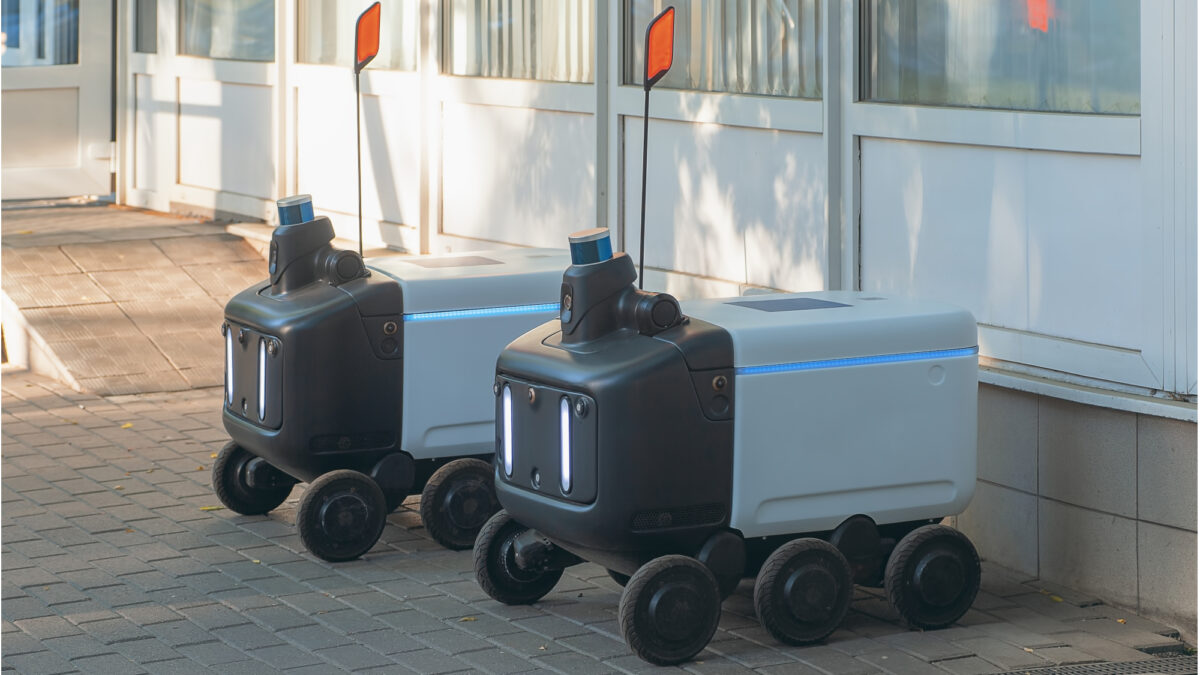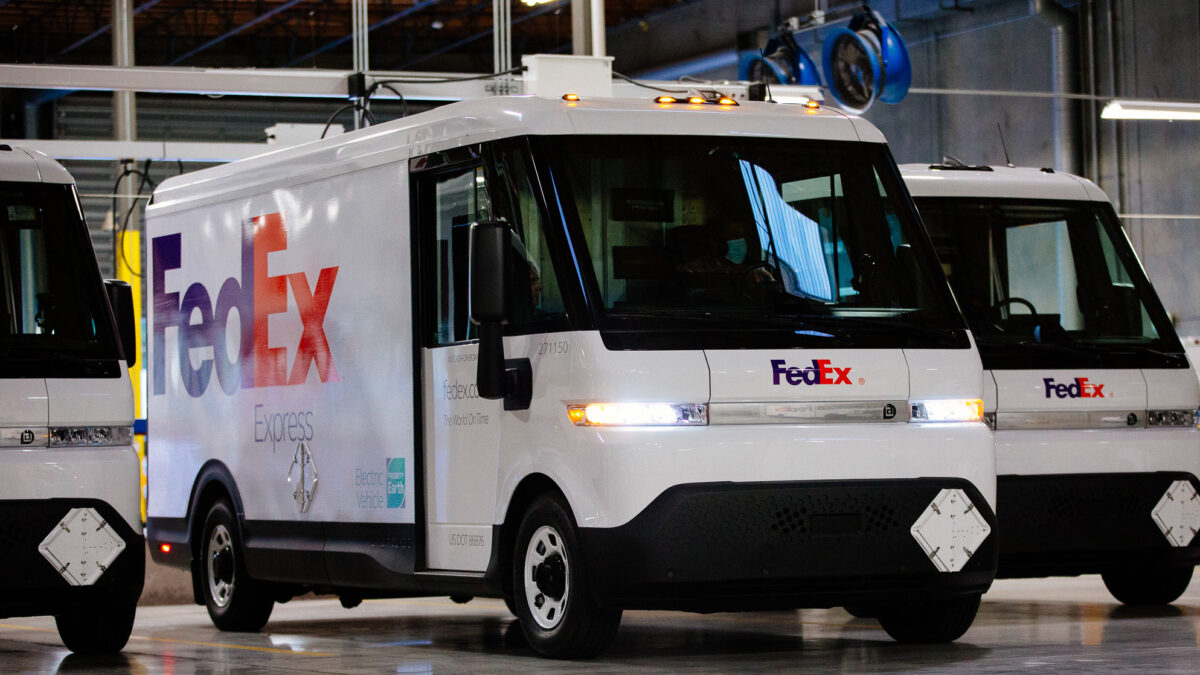The race to get packages to consumers’ doorsteps is multifaceted, with manufacturers of drones, delivery robots, electric vans, package delivery providers and even gig economy drivers all engaged. And while no one method is likely to win out in the future – most experts believe a mix-and-match approach to the last mile is the best approach – when it comes to sustainability, there may be a clear winner.
And it is not drones as many believe.
A research paper published last week on Patterns, an open access platform for researchers and educators to publish journals and data projects, says that delivery drones are the most energy-intensive vehicles when greenhouse gas emissions are measured on a per-metric ton-kilometer basis.
The paper, “Drone flight data reveal energy and greenhouse gas emissions savings for very small package delivery,” was written by Thiago A. Rodrigues, Jay Patrikar, Natalia L. Oliveira, H. Scott Matthews, Sebastian Scherer and Constantine Samaras.
The research compared small quadcopter delivery drones, electric cargo bikes, and diesel and electric medium-duty trucks and small vans.

“An analysis of the GHG emissions of the fuel of each transportation mode shows that quadcopter drones and electric cargo bicycles are among the most efficient vehicles in terms of CO2e per km and a competitive alternative in terms of GHG emissions per package. On the other hand, it is important to note that small drones are considerably limited in terms of weight and volume of the packages transported. Therefore, an analysis of the energy consumption and GHG emissions on a per metric ton-km basis shows that small drones are the most energy-intensive vehicles,” the authors concluded.
To accomplish their analysis, the authors calculated GHG emissions per package delivered in the U.S. and used a variety of measures including U.S. Environmental Protection Agency data, battery life cycle emissions, delivery distance, payloads and speed. Impact on the regional electricity grid was also factored into the analysis.
Over 120 drone flights were analyzed. Those flights featured drones flying between 25 and 100 meters with ground speeds of between 4 and 12 meters per second in wind speeds between 2 and 16 knots. The authors found that wind conditions and ground speed had little impact on the average energy consumption of the drone.

When compared with other methods of delivery, drones and electric cargo bikes were viewed as the best options in terms of GHG, however, their limited payload capacities impacted the overall metric ton-kilometer efficiency.
“Even before COVID-19, the growing demand for fast, contactless deliveries has been driving firms to experiment with automated package-delivery vehicles, such as uncrewed aerial vehicles (UAVs), that can avoid traffic in urban centers,” the research noted. “Nevertheless, along with technology and policy challenges, increased shipping costs is a limitation for the adoption of autonomous delivery vehicles.”
The specific drone used in the research was a DJI Matrice 100 (M100) model. That model is smaller and carries less payload than current purpose-built delivery drones, the authors noted, but added that they felt it provided a good representation to serve as a base for future studies on last-mile delivery carbon intensity.
When it comes to energy consumption, the electric cargo bike was the clear winner with the drone a close second. Small electric vans and diesel vans were next. The authors did not provide exact numbers, but the small electric van, drone and cargo bike were all less than one-half of a megajoule (MJ) per package carrying a 1.1-pound package. A MJ is equivalent to 0.27 kilowatt per hour.
The medium-duty diesel truck was above 5 MJ.
Since a small cargo drone can carry far fewer packages at a time than a van or medium-duty truck, the authors calculated the GHG impact on an equivalent package basis, assuming that each vehicle was carrying packages identical to what the drone could carry. The result is the minimum number of packages per km (delivery density) that each vehicle would be required to carry to match the drone’s energy consumption and CO2 equivalent per package.

In that analysis, the medium-duty diesel truck would need to carry 33.8 packages/km to match the drone. A small diesel van needs 15 packages, followed by a medium-duty electric truck at 11.7, small electric van at 5.1 and electric cargo bike at 0.3.
The authors noted that the calculations varied based on region of the country and electricity cost among other variables. Factoring in all the data, electric cargo bikes had the lowest carbon footprint per package, ranging from 16.8 grams of CO2e per package in New York to 30.8 grams per package in the Midwest, which the authors noted was the most carbon-intensive region of the country. The overall average was 23.4 grams per package.
Drones, on the other hand, had a range of 48.5 grams per package in New York to 93.8 grams per package in the Midwest with an average of 70.1 grams per package.
More research is needed, the authors conceded, but they were able to draw some initial conclusions.
“The energy consumption of a very small, commercially available quadcopter drone with payload of 0.5 kg is comparable to the most energy-efficient modes of last-mile delivery when the total mass of delivery is not the main feature considered,” they wrote. “For example, in delivery situations where small and light items with high added value, such as medical deliveries, critical packages and small electronics, very small drones might become a competitive tool to reduce transportation emissions in large urban centers. In these scenarios, we found that drones can reduce the energy consumption by 94% and 31% and GHG emissions by 84% and 29% per package delivered by replacing diesel trucks and electric vans, respectively.”

The research offers good news for all modes, but when it comes to energy consumption, nothing matches the drones and small delivery robots. On the other hand, if the goal is to deliver the most packages in the most efficient way, brands may wish to stick with electric vans and diesel-powered trucks for now.
Click for more articles by Brian Straight.
You may also like:
Walmart wants to combine robot and drone delivery










